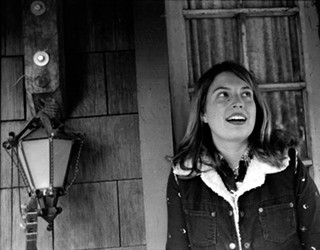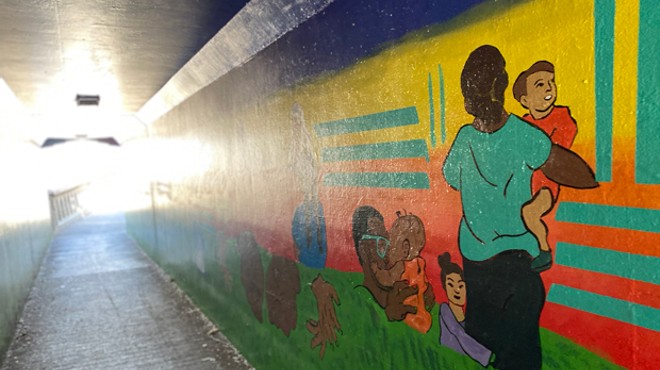Today the industrial neighborhoods east of the train tracks, just four or five blocks from downtown Bend, are largely run down and neglected. Few people live there, and most of the buildings were built in the 1970s, '80s and '90s, with function, not aesthetics, in mind.
But now the City, environmental groups, developers and citizen volunteers want to change that. Together they have an ambitious vision to jump start growth and transform the area into a vibrant, walkable neighborhood where people can live, work and play.
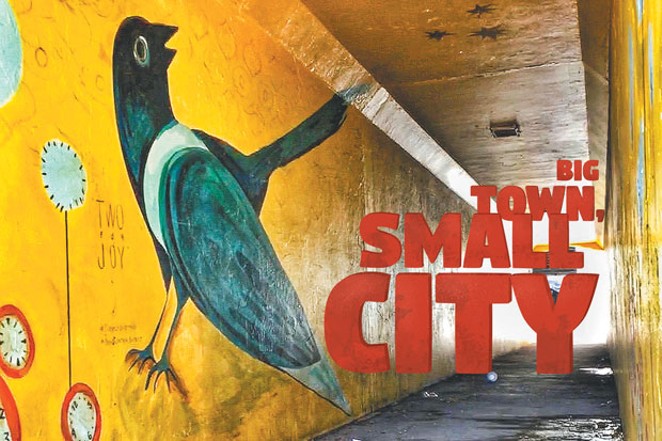
The area of interest stretches north to where NE Division Street meets the Deschutes River and south along Third Street toward Reed Market Road. It includes the area around Crux Fermentation Project, neighborhoods east of downtown and then continues east to Fourth Street with an outstretched arm along Highway 20. This is the Bend Core Area, where the city wants to establish an urban renewal district, and it is about 400 acres larger than the original Bend Central District, which only included Bend's industrial blocks next to the train tracks.
Interest in the BCD spiked after the 2016 Bend Urban Growth Boundary expansion: To meet demands from the state for more infill development, the BCD was rezoned to allow for increased building heights and reduced parking requirements. But not a single developer took the bait in the four years following. More than a few have bought up land and sat on it, waiting for someone else to make the first move, according to Mary Hearn, who's working to catalyze development in the area by connecting landowners, investors and developers.
After the UGB code changes in 2016, Central Oregon LandWatch got behind BCD redevelopment in a big way: it set up the BCD Visionary Board (where Hearn serves as a member) and lobbied the City to put more time and attention into the district. COLW's Director of Urban Planning, Moey Newbold, explained that rallying for infill development meets the organization's goals of increased density in the city, which not only protects wildlife from the effects of continued urban sprawl, but reduces fuel consumption, one of the biggest sources of greenhouse gas emissions. In 2018, COLW secured a $100,000 grant from Meyer Memorial Trust to continue its work on the BCD with a focus on equity, housing and safer streets.
“This community vision is critical for the future of our region because the alternative to density is sprawl, which costs people in terms of hours spent commuting, air pollution, infrastructure costs, and loss of wildlife habitat.”—Moey Newbold
tweet this
BCD Visionary Board Lives On
COLW's enthusiasm won over the Bend City Council, which set up the Bend Urban Renewal Advisory Board, a 13-member volunteer committee tasked with creating a common vision and plan for the BCD and studying the feasibility of establishing an urban renewal district, which would receive extra funds from the City for improvements. The BCD was rebranded as the Core Area Project, and expanded from a 206-acre industrial area to 637 acres throughout the heart of Bend.

The Bend Urban Renewal Agency's final picks for the board in the summer of 2018 did not include Newbold of COLW, but did bring together a diverse coalition of developers, business owners, multi-modal transportation advocates, financing experts and residents of the area.
Meanwhile, Newbold's BCD Visionary Board is still active. Newbold believes its purpose is to continue to ensure that the city and community hears from a diverse set of voices during the process. The group spearheaded the mural project created by artist Kaycee Anseth inside the underpass at Franklin Avenue, featured on the Source's cover this week. The BCD Visionary Board has plans for more public art in the future as a way of bringing interest and attention to the area.
"As a conservation organization that values careful planning, Central Oregon LandWatch believes in creating an inclusive, dense, mixed-use neighborhood in the Bend Central District that is well-served by safe and healthy mobility options," Newbold said. "This community vision is critical for the future of our region because the alternative to density is sprawl, which costs people in terms of hours spent commuting, air pollution, infrastructure costs and loss of wildlife habitat."
URAB Goals and Planning
The URAB has met once a month since February 2019 to provide some rules aimed at making the area a success. If the board's recommendations for a renewal district are approved, the Bend Core Area could benefit from a projected $112 million in improvement investments from the city over the next 30 years.
A year into the process, the board agreed on some primary goals to guide its planning decisions. These include removing barriers between the west and east sides of Bend, preserving affordability, creating a walkable area with efficient transportation and using public money to catalyze private development and sustainability. The group would like to see livable developments, and to create guidelines and incentives that are practical and lead to progress. "This plan does not sit on a shelf," it says in the URAB's Guiding Principles.
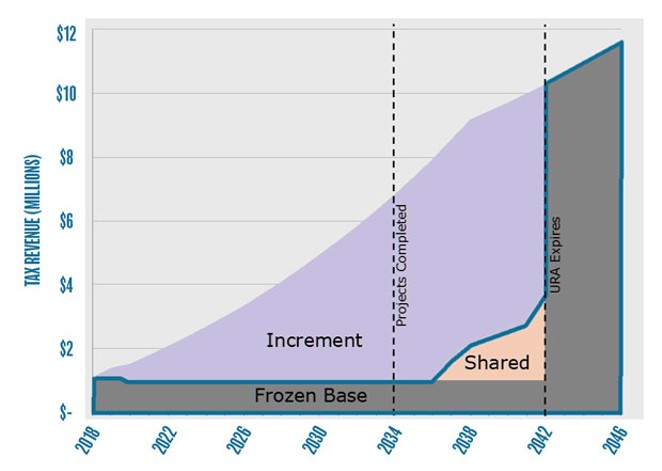
Over the last year, the urban design framework the board created prioritizes infrastructure projects to improve connectivity to downtown and the rest of the city. The board also wants the urban renewal district to fund public spaces, streetscape improvements, art and beautification projects and affordable housing.
The board has made substantial progress and recommendations for building code changes as well. They want to allow for more residential development off the main corridors. (The 2016 UGB code requires that all new buildings must have commercial space on the ground floor.) The board also recommends easing parking requirements for both commercial and residential space. These changes were approved by the Bend Planning Commission last month. They'll come before the City Council on Wednesday and could go into effect as early as April, if approved.
The People of URAB
Elise Jones owns and operates Fancywork Yarn Shop on NE Greenwood Avenue. She applied for the URAB to contribute her perspective as a business owner in the area. Jones said serving on the committee has been a really positive experience where she feels her opinions are valued, noting the City has been very respectful and efficient with the short time the group meets every month.
"The process has gathered together a broad range of interests," Jones said. "The vision is to pull together different sides of the city that are very separated from each other, not just by the railroad and [Highway] 97, but also economically and philosophically... it's a great opportunity to remove the barriers both physically and metaphorically, to bring everything together."
Another URAB member is Steve Porter, an avid bike commuter who works as a consultant. He says URAB has been very even-handed among competing and cooperating interests in the City and that there has been a heavy focus on building equity among many different demographic groups in Bend. He also sees URAB as a forward-thinking response to some of the issues that are currently top of mind for the politically- and socially-minded.
"We face a number of problems in our society: climate change, obesity, tax and funding requirements, unsustainable sprawl," Porter said. "Increased densification could solve a lot of this.
"Right now we have the ability to flip what I would consider to be an under-utilized area to perhaps the best part of Bend: to expand the franchise of what Bend has to offer, expand to new people, with beneficial amenities brought to the front door."
Bend Senior Planner Allison Platt acts as a liaison for the city during URAB meetings. She often commutes to work at City Hall from the east side of Bend on her bike, and is excited for the possibility of a new urban renewal district because it could fund a bike and pedestrian overpass at Hawthorne Avenue from downtown into the Bend Core Area, something that would immediately make the area more accessible. She's also enthusiastic about the project's sustainability goals and the chance to transition to an urban environment, and "go vertical," she said.
"Developing this area is more cost effective, on a cost per acre basis," Platt said. "If we can encourage more dense urban development where there is already base infrastructure, we can do it at a much cheaper rate.
"This can also provide for lifestyles that Bend's traditional single-family zoning haven't necessarily supported," she said. "There's opportunities for young professionals, empty nesters, and Boomers that are retiring, to live in places like small efficiency dwelling units like they have in Seattle, all close to amenities and downtown."

What is Urban Renewal?
Urban renewal is a tool Oregon cities can use to reinvest in underdeveloped or blighted areas. As these neighborhoods begin to develop and property taxes go up, cities can redirect the tax money back into improvements in the district, instead of giving the usual percentage to parks and schools. That money can then be used to invest in utilities, multimodal connectivity projects, affordable housing, streetscaping and even murals and street art.Matt Stuart, urban renewal manager for the City of Bend, said the money may also be used as a financing mechanism to fund projects that would not otherwise pencil out for developers.
"We want to be the last resource, not the predominant funding mechanism," Stuart said. "But if a project comes forward, an affordable housing project for example, and it's 10% short, the urban renewal money could be used as a grant, capital improvement or as a low-interest loan to get the developer all the way there."
Stuart explained that that proponents of urban renewal see it as a win-win in the long term. While the amount that schools, parks, police and fire receive freezes for 30 years at the current rate, when the renewal times out, these districts receive much more than they would have without the improvements, recouping their 30-year loss in four or five years.
"Bend Park and Recreation District is getting less money, but schools aren't really affected because of the way the state redistributes money on a per-student basis," Stuart said. "We've assessed the current value of the area at $439 million. We predict that in 30 years it will be $2.09 billion. We'll be able to leverage $112 million in today's dollars to do things like improving connectivity to downtown and creating a livable environment for walking and biking."
The City currently has two active urban renewal projects: one near the Walmart Supercenter on the south end of Bend, including Murphy Road, and another at Juniper Ridge on Bend's north end.
Dale Van Valkenburg, the chair of URAB, is also the director of planning and development for Brooks Resources Corporation, who's worked in urban planning for 30 years. One of the most successful examples of urban renewal he's seen is in Portland's Pearl District. He also mentioned Redmond's urban renewal district which inspired developers to transform the Old Redmond Hotel into SCP Hotel Redmond, which brands itself as embracing "soul, community and planet" to deliver "holistic hospitality."
“The problem with the central district is that it’s been neglected… it is now a bunch of old single-story buildings. There are barriers to getting people to want to live there. But urban renewal lets developers take the risk.”—Dale Van Valkenburg
tweet this
The Future
Brooks Resources invested in the Blue Dog RV building and parking lot sandwiched between Walgreens and Les Schwab Tire Center on NE Franklin Avenue, which is inside the BCD. Van Valkenburg said his company is still in the visioning process for the project and their future decisions will be affected by upcoming code changes for the area and the status of the urban renewal process.
"This is a new thing for Bend, going from a large town to a small city," Van Valkenburg said. "A few examples are the Franklin Crossing Building and what is going up where Ray's used to be. It's zoning changes that has allowed those things to happen. The problem with the central district is that it's been neglected... it is now a bunch of old single-story buildings. There are barriers to getting people to want to live there. But urban renewal lets developers take the risk."
Van Valkenburg serves URAB as a representative of Brooks Resources. When asked about the potential conflict of interest between serving the community as a member of URAB while also as a representative of Brooks Resources Corporation, which owns land inside the BCD, Van Valkenburg said: "The City actively recruited and pursued people to apply for the board who had known conflicts of interest. It was set up as a stakeholder group: there's business owners, property owners, a commercial real estate broker with clients within the area... We all declare our conflicts of interest at the beginning of the meetings. And, we are just an advisory board. The City Council will ultimately be the ones to make the final decisions."
Dennis Pahlisch, who owns Pahlisch Homes, also serves on URAB.
"This is not a handout to developers," said Stuart, who is managing the urban renewal proposal for the area. "They'll do some sidewalk improvements, for example, and the city will do the other half. We want to help the pioneers, the people willing to take the risk, because right now not much is moving in that area."
"If you really want to transform an area, and you want to set the stage to make possible your vision as a community leader, you need to have a diversity of viewpoints and value sets... different people at the table to help you get it done, including the people that are going to be doing the work of transforming the area," said Mayor Sally Russell when asked about the participation of developers in creating an urban renewal district.
"We've consistently found that having diverse stakeholders gives us a well-informed plan that will benefit the community as a whole," Russell said.
As a harbinger of things to come, the same Portland developers who created the Jupiter Hotel next door to the Doug Fir Lounge in Portland—arguably one of the best music clubs in the state—bought the Three Sisters Inn & Suites on Third Street, within the BCD. They have aspirations to eventually host live music, and transform the motor lodge into hipster heaven.
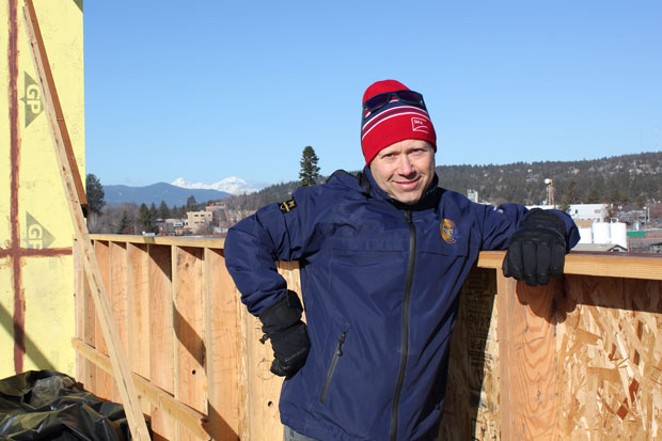
Paul Israel of Sunlight Solar Energy is also moving his company's headquarters to a building in the BCD at 150 NE Hawthorne Ave. Israel says the building will be net zero, and he plans to rent out the extra space inside to other businesses, which meets the City's goal for increased density.
To offer local people more information on the proposed urban renewal district and the BCD, the City of Bend is planning a Core Area Open House on Thursday. The City will present the common vision of the URAB and the plan for implementation. Platt, who manages URAB, and Stuart, from urban renewal won't give a formal presentation, and the City will post an online version of the open house following the in-person event.
Core Area Open House
Thu., Feb. 20, 5-7pm
Trinity Episcopal Church (Brooks Hall)
469 NW Wall St., Bend
Bendoregon.gov
Free

